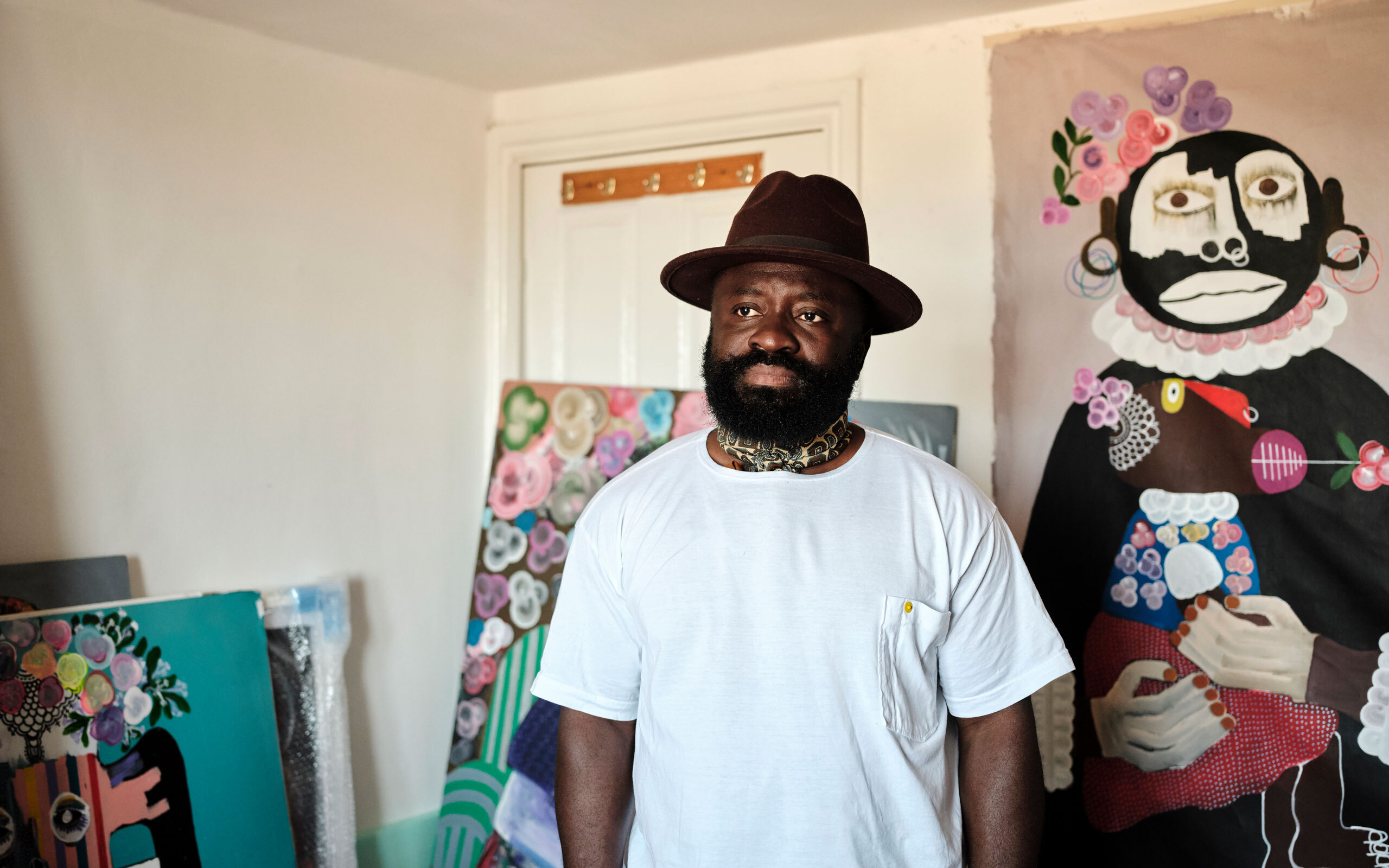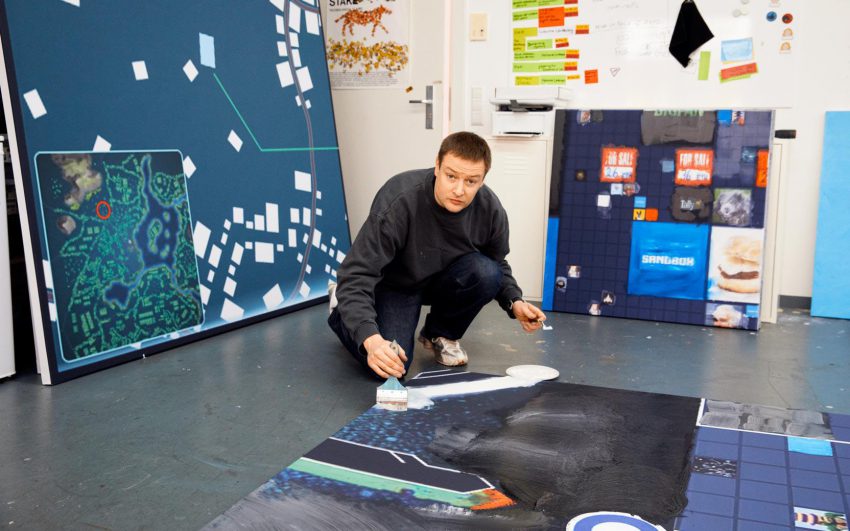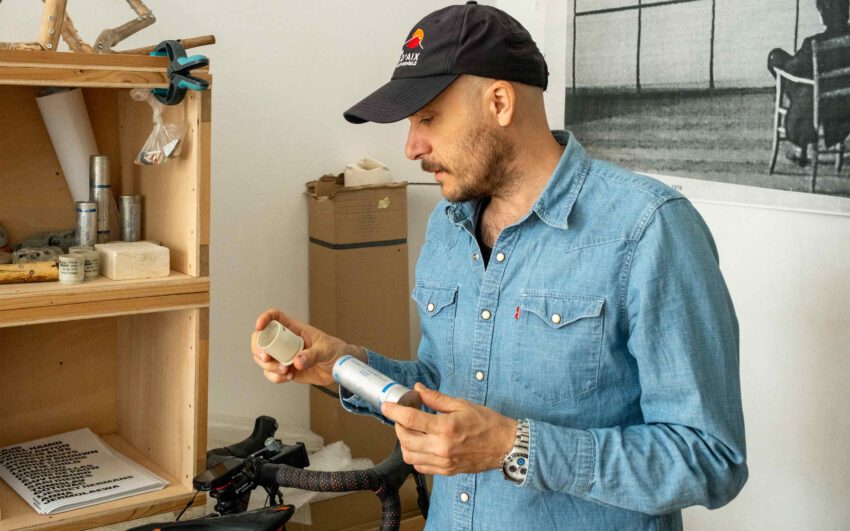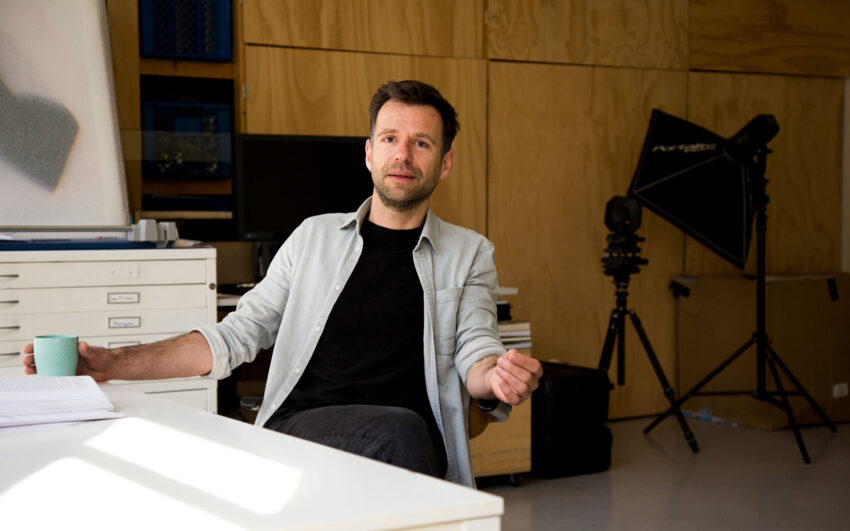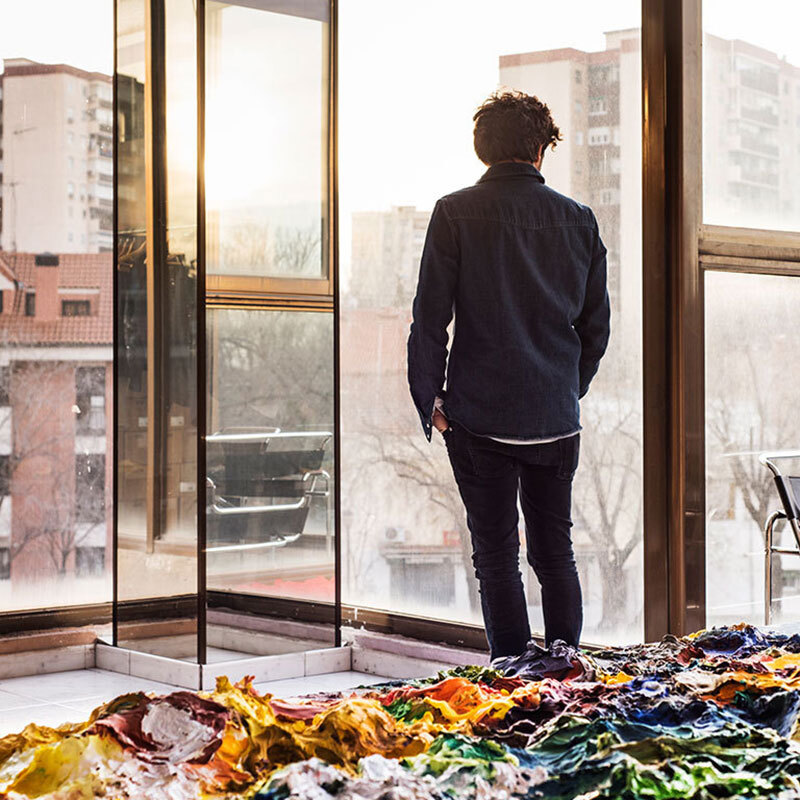Kojo Marfo is a London-based artist whose paintings tell stories that pose universal questions. He combines the Akan iconography he grew up around in Ghana with Western references from his time in Europe and New York to create dreamlike scenes whose genderless figures transcend both worlds and are accessible to all.
Kojo, how did you arrive at creating art?
Coming to London as a teenager was a turning point for me – I visited lots of galleries and museums and that was the first time I knew I wanted to pursue art as a career. I always enjoyed art classes in school but seeing all those works in real life suddenly made me feel like I could do the same. I considered studying at St Martin’s and had the chance to visit and speak to some professors but higher education wasn’t for me. I thought they would try and mould me as an artist and I don’t like being told what to do – the more people say ‘let’s do this, let’s do that’ I lose a sense of what matters to me.
Where did your drive come from?
I don’t fit into the 9 to 5 thing. So part of the reason I am an artist today is because I couldn’t do any other job. In the early 2000s, when I was starting out I did a lot of retail and customer service jobs to support myself but I usually end up leaving them or being asked to leave because I struggled to fit in. I lived in New York for a couple of years and that was a turning point for me too. Before then, I was only painting in black. But spending time around graffiti artists and seeing how they used bright colours gave me the confidence to do the same – I liked how they used colour to stand out and be remembered.
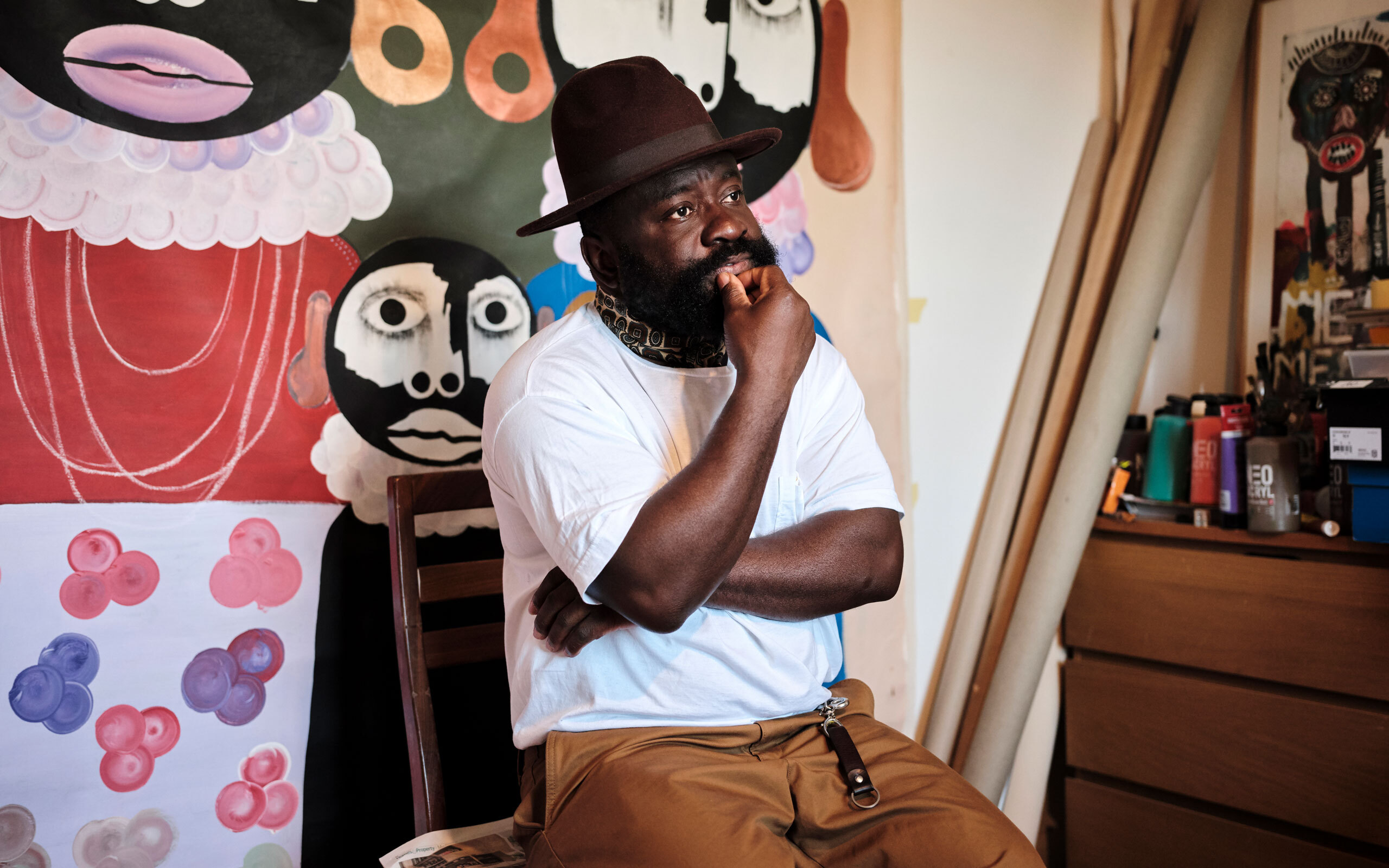
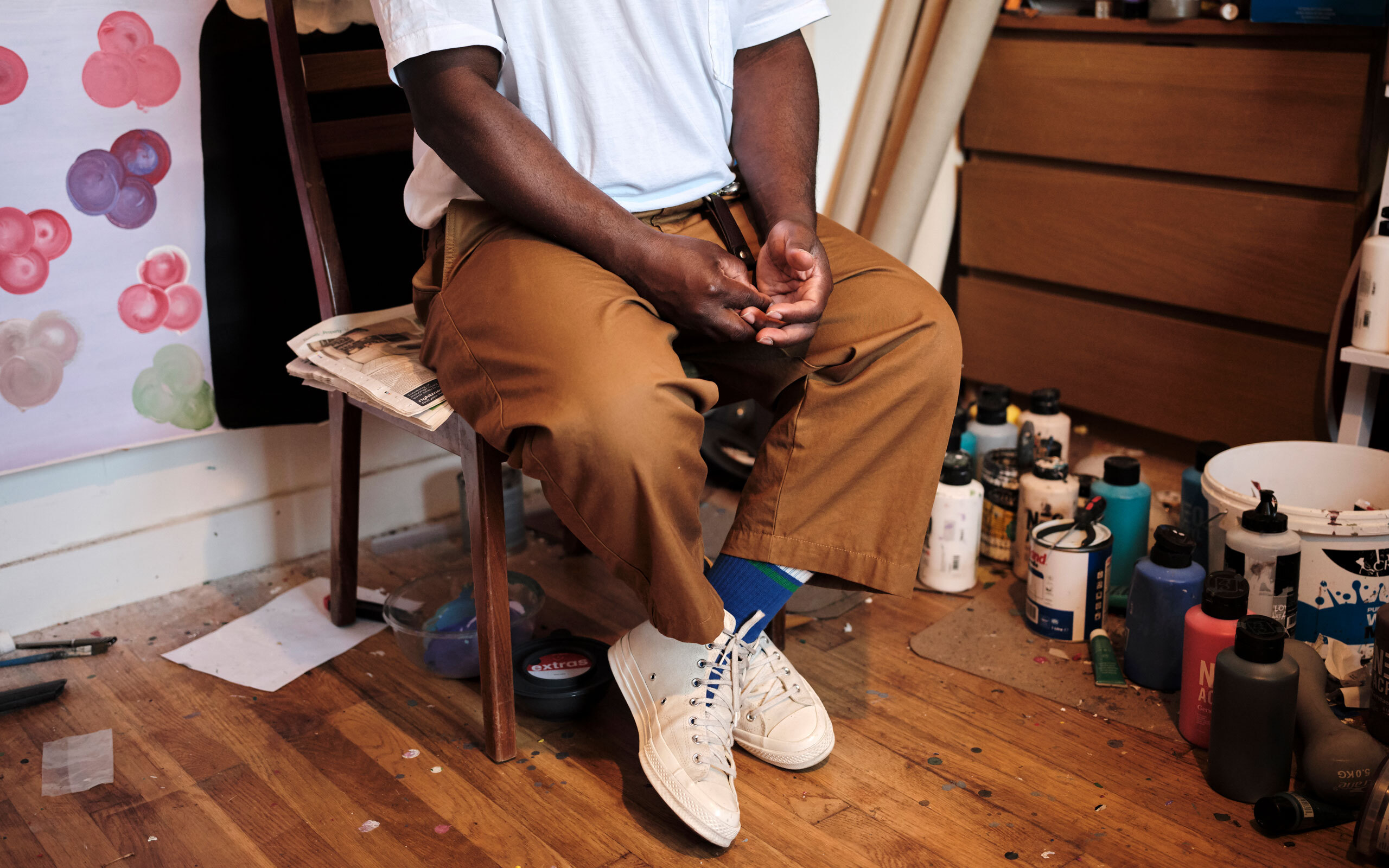
Is there a particular artistic concern that determines your work?
I want to show people that whatever they are going through in life we are all facing the same issues and problems. My great-grandmother was a traditional healer and I think I have inherited a desire to help people – it informs my practice as an artist and how I live my life. Exploring human conditions is my main focus, as well as conveying my understanding of things and my upbringing.
What is it about making art that's most important to you?
My paintings allow me to say more than just words. There are things that can’t be expressed through speaking and I want to draw the viewer in and to get them to consider things that might not have occurred to them before. Anyone can paint but it’s the stories behind the images I create that matter most to me. Even now I struggle to call myself an artist because I never set out to make money from it. At the beginning of my career, my paintings were about my hometown and upbringing but then at some point, I asked myself ‘how long can you go on just talking about these things? Something has to change.’ Then the political landscape started changing – identity politics suddenly became a very big thing and I thought ‘hey, I can join in’ – I didn’t want to take a stance but to observe and absorb it and then use what I saw to tell stories.
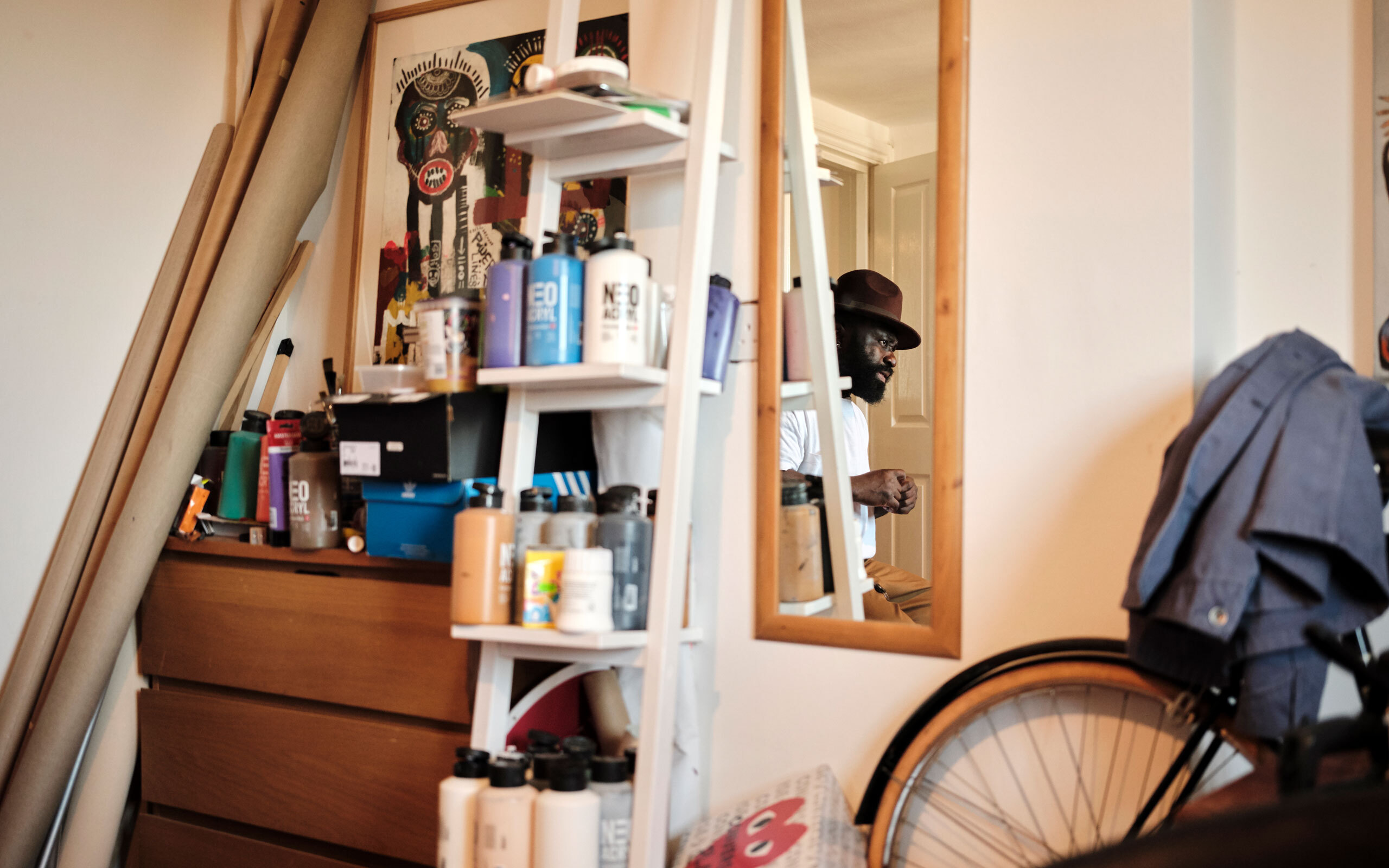
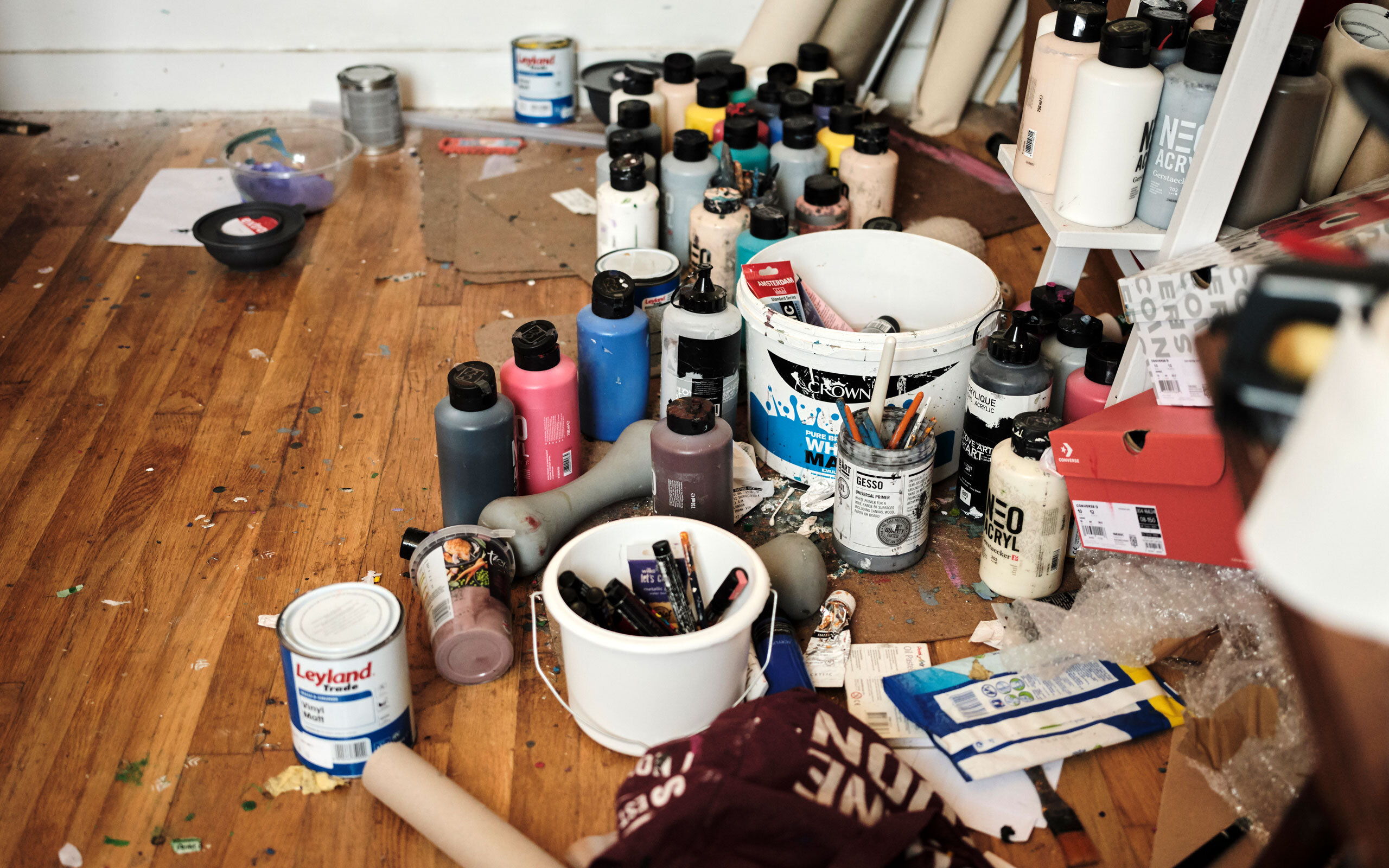
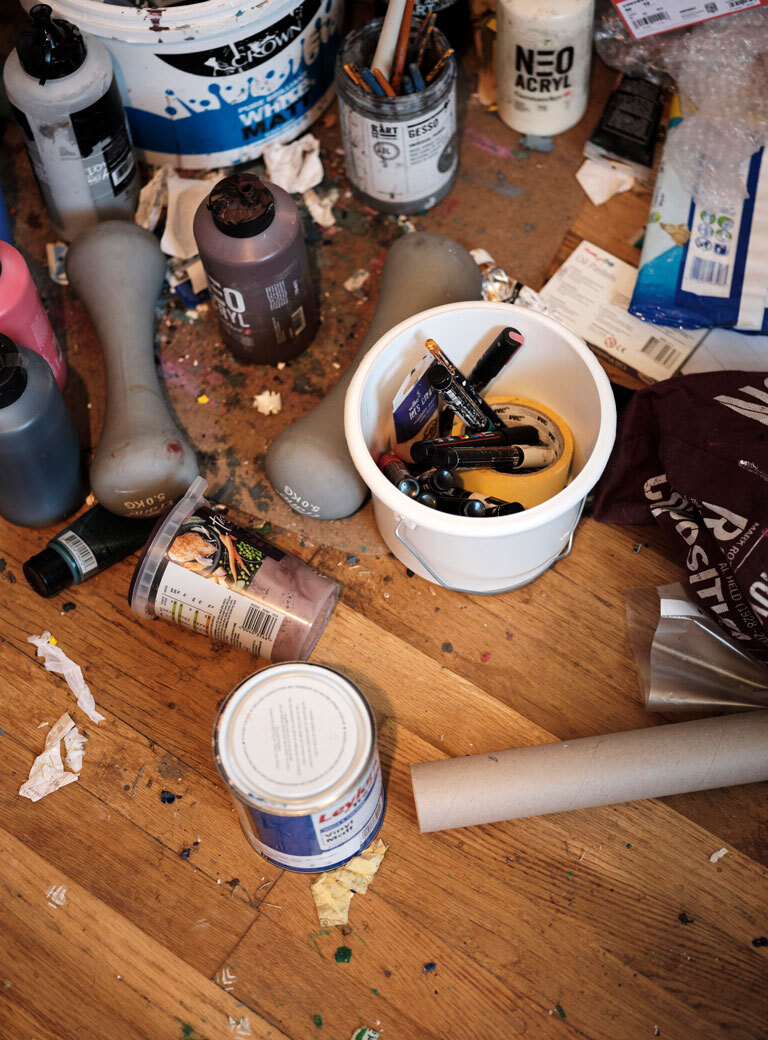
How would you describe the art that you do in a few simple words?
I describe myself as an afro-expressionist and refer to my work as cultural hybridity. My paintings reference different cultures and combine European and African themes. The figures in my paintings are based on traditional Akan fertility dolls. They are wooden dolls with no arms and a round head that are given to women when they reach childbearing age. The dolls are my main inspiration, they are what I took from my culture and then I incorporate them into other cultures and other cultures into them – that’s why I call it cultural hybridity.
Can you give an example of how you do this?
One good example is that in lots of my paintings, the figures are dressed in ruffs – which is a reference to 16th- and 17th-century European court paintings. I also incorporate animals and flowers in my work to give it universality because nature is one thing that connects humans together. The flowers are also a nod to my upbringing, they come to my mind whenever I’m painting and including them makes me feel more connected to my artwork as they allow my mind to travel home.
How has living in different continents impacted your work?
My experience of different cultures is the tool I use to paint – it allows me to address the things humanity has in common. I feel privileged to have lived in Ghana, New York and London – I have experienced different cultures and I am always comparing them and combining them in my work. Observing human interactions or how people treat me, I often consider how that same situation may have played out differently somewhere else. I want my paintings to make people pause and focus their attention on things they might overlook in everyday life – it’s very difficult to unsee or unhear things.
In a world where those in power often make empty promises, I want to tell a story that connects everyone and makes people feel less alone.
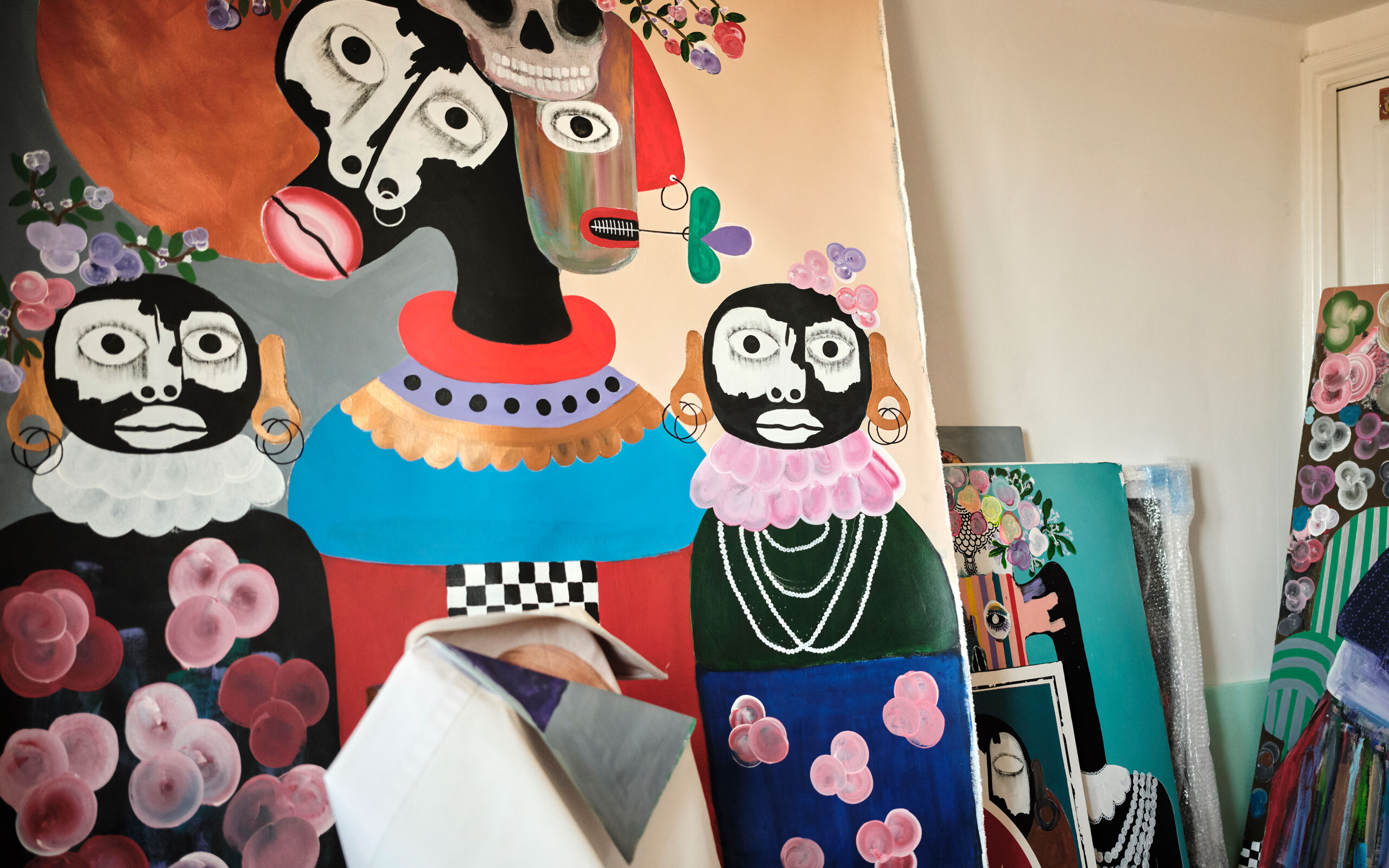
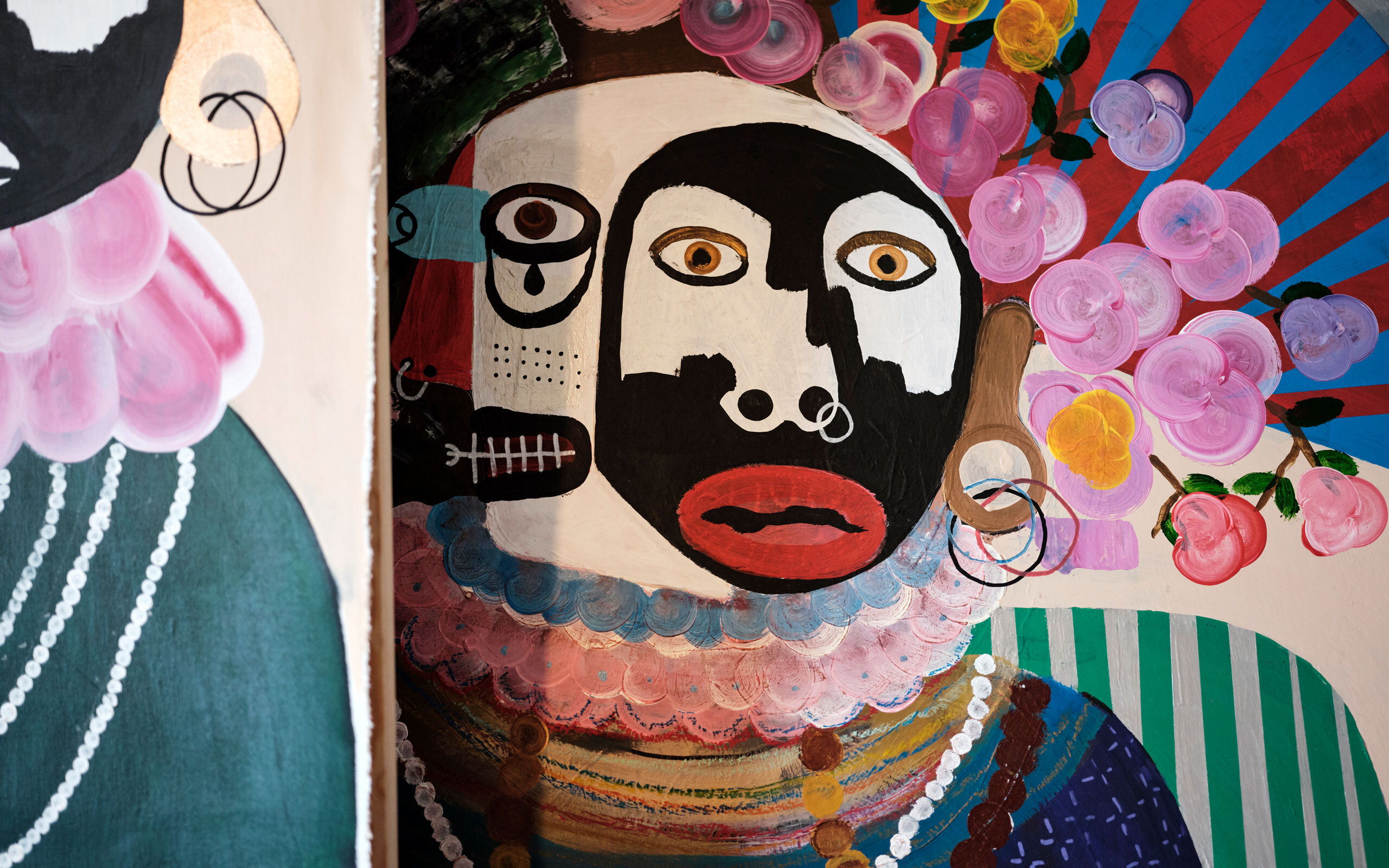
In some of your paintings the figures have muzzles over their mouths, why is that?
I wanted to reflect the idea that in the society we live in now there are so many things you can’t say – we have been muzzled. We are scared to speak out and so we just, eat, drink, sleep, and go home. I know I have to be careful with what I say and I just feel like we are always being censored. There may be things you want to say freely but you have to be aware that whatever you say might offend somebody.
So you challenge this sense of censorship in your work?
Yes, I think if you are trying to say something about the human condition you shouldn't hold back. Living in a melting pot like London means people are cautious about speaking their minds. We are all aware that what people agree with today might change tomorrow, so we are hesitant to express ourselves freely for risk of seeming insensitive or ill-informed. One way I try and gauge people’s take on things is by using social media. I sometimes do a post on a current topic and see how people engage with it and react to it. It can be a good way of telling whether people are thinking the same as you about certain issues.
How does the art you create fit into our times?
I want my work to tell a story that connects everyone at a time when society is very polarised. Anything you say, especially on social media, could spark debate, be misinterpreted or upset someone – that’s just the reality we live in. As an artist one of the challenges I face is being relevant to young people and fitting into their way of thinking – I still want to be relevant after I am gone. The world is changing, young people are challenging everything and slowly dismantling prejudices and stereotypes – these are exciting times, I think the future is bright and I want future generations to relate to my work.
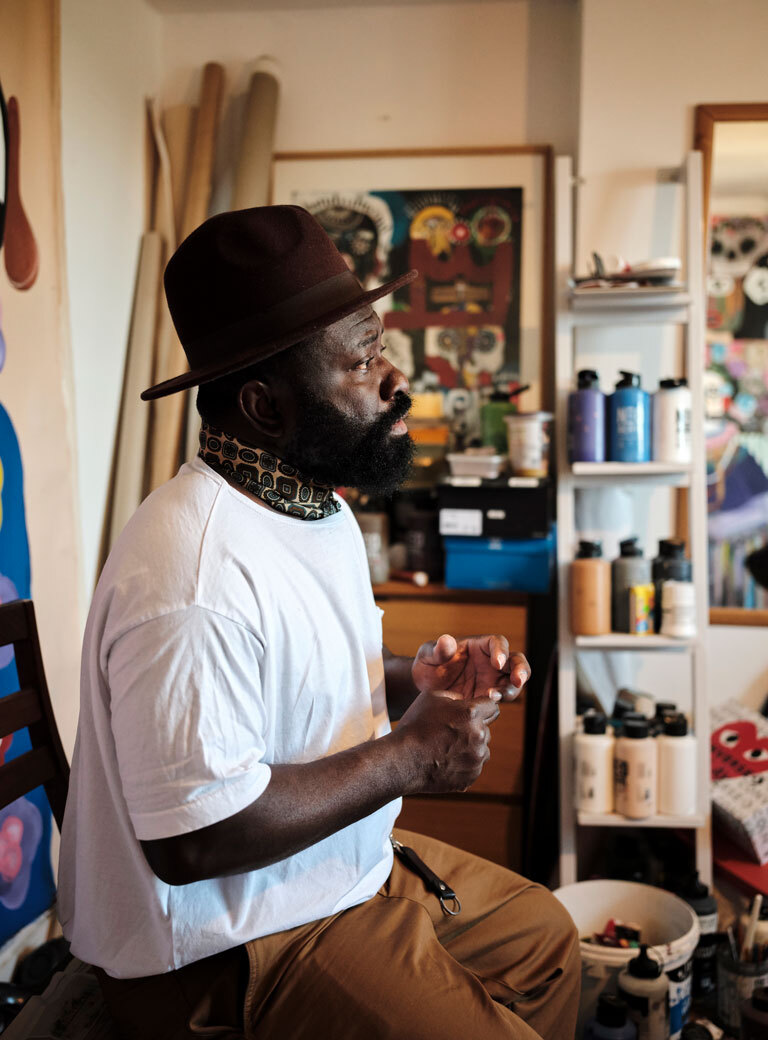
The figures in your paintings appear to be genderless – is that intentional?
Yes – my figures are genderless because I want them to represent humanity rather than men or women – so it’s up to the viewer to choose their gender. Gender and beauty are two things that are very subjective and can divide people – I want my work to be universal so everyone can relate to it. While I try to keep the images and neutral as possible I come from a culture that is matrilineal and I depict that culture a lot in my paintings.
Can you explain what matrilineal means in this context?
It means we inherit from our mothers rather than our fathers. The women are the powerful ones, they have the wealth and put food on the table. Single mothers in Western society are often unfairly characterised as vulnerable women who need help. But where I am from the word ‘single-mother’ does not exist. It is not a concept in our culture and I feel privileged to have experienced both worlds.
Why do you paint figures with facial skin discolouration?
I was painting a friend who has vitiligo and this helped me discover a new way of painting that stuck with me. I liked how the work ended up so much that I decided to replicate the technique and make it my signature style – it’s a bit like a calling card.
Is there a prejudice or misunderstanding concerning your art that persistently prevails?
My work addresses social issues so I don’t set out to make beautiful art but I think sometimes people can get distracted by the pretty flowers and animals. I’m not really affected by what people think of my work because I know what I am doing and my intention is to create something that sparks conversation. I wasn’t classically trained so my work isn’t the same as someone who has studied painting at college or university but it’s not about that for me – if people spot imperfections in my work then that is part of my creation. I creative things intuitively with the intention of making people talk.
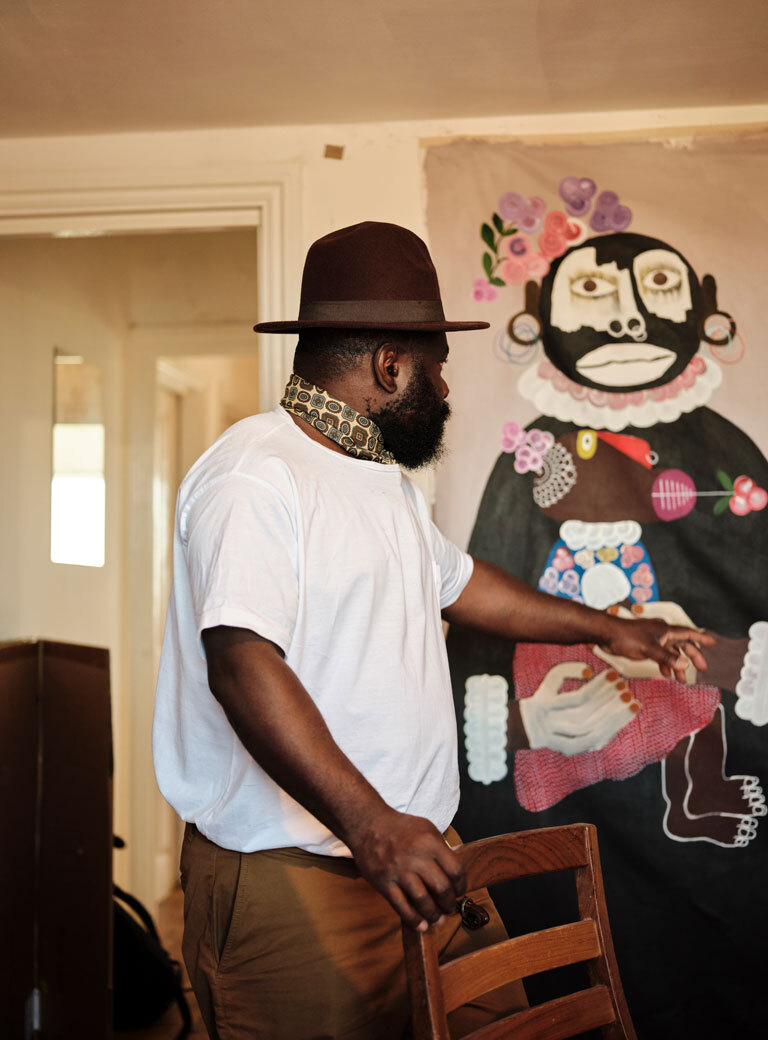
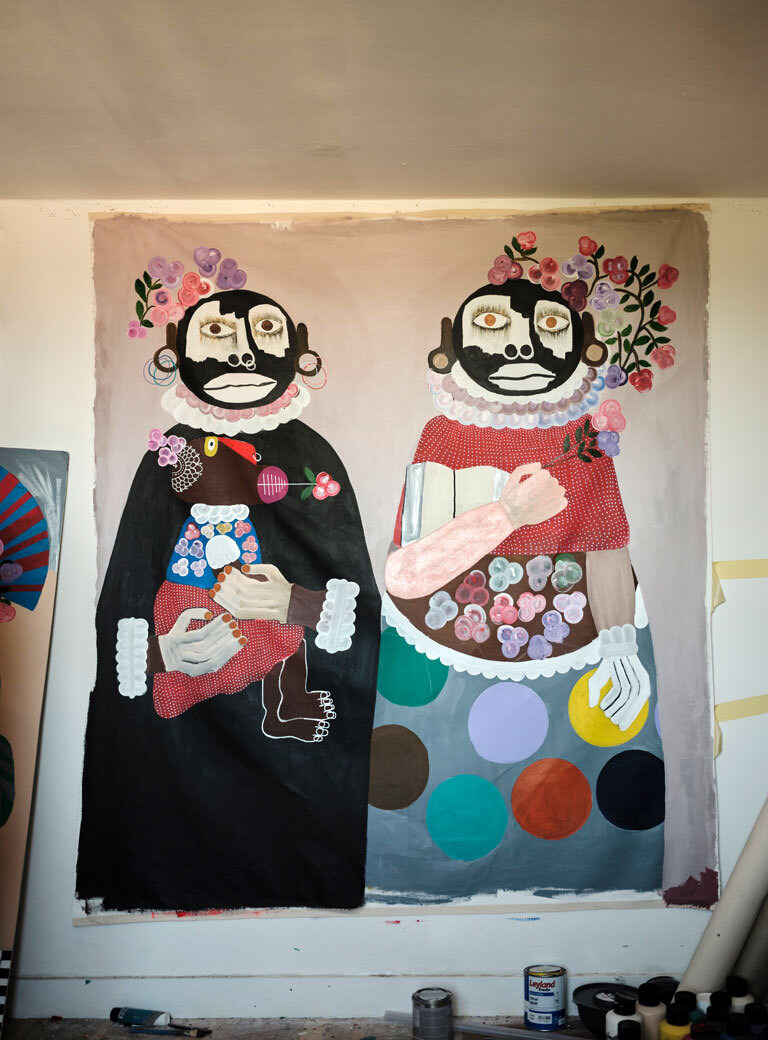
Do you have personal references in art history, fellow contemporary artists whose work you appreciate, or other people who inspire you?
Picasso is my number one inspiration, he changed art and made it accessible for everyone. If I hadn’t seen his work, I wouldn’t be who I am today – also Fernand Léger and Wifredo Lam. And the neoclassical artist Jean-Auguste-Dominique Ingres’s composition heavily influenced me. The settings he created and the family portraits and details like the ruffs people wear in his pictures crop up in my work. The way his subjects are positioned and the setup of his paintings I also use as a reference.
What about when you were growing up?
Growing up in Ghana I was surrounded by people sculpting and carving, they were artisans rather than artists, creating images to sell to tourists. They inspired me a lot but there isn’t one person I could pinpoint among them as being a key influence. I liked watching them and the things they were creating were very beautiful – they were amazing carvings and even some of the paintings were beautiful but there wasn’t any literature for me to read to get to know what they were doing. So I use them as inspiration rather than a formal reference.
Can you share your thoughts on contemporary Black Art and African Art?
I think the problem is that when people hear the term African art or Black art they still think of outdated stereotypes like women carrying baskets on their heads or masks but things have changed. A new generation of artists are now reclaiming these images, recreating them from their own perspective and challenging outdated views. Sadly, there is still a long way to go but I’m hopeful because we are moving away from narratives about struggle to ones of empowerment and pride. For instance, there are so many beautiful things about Ghana people outside of my country might not know about, I hope to be able to show these in my work.
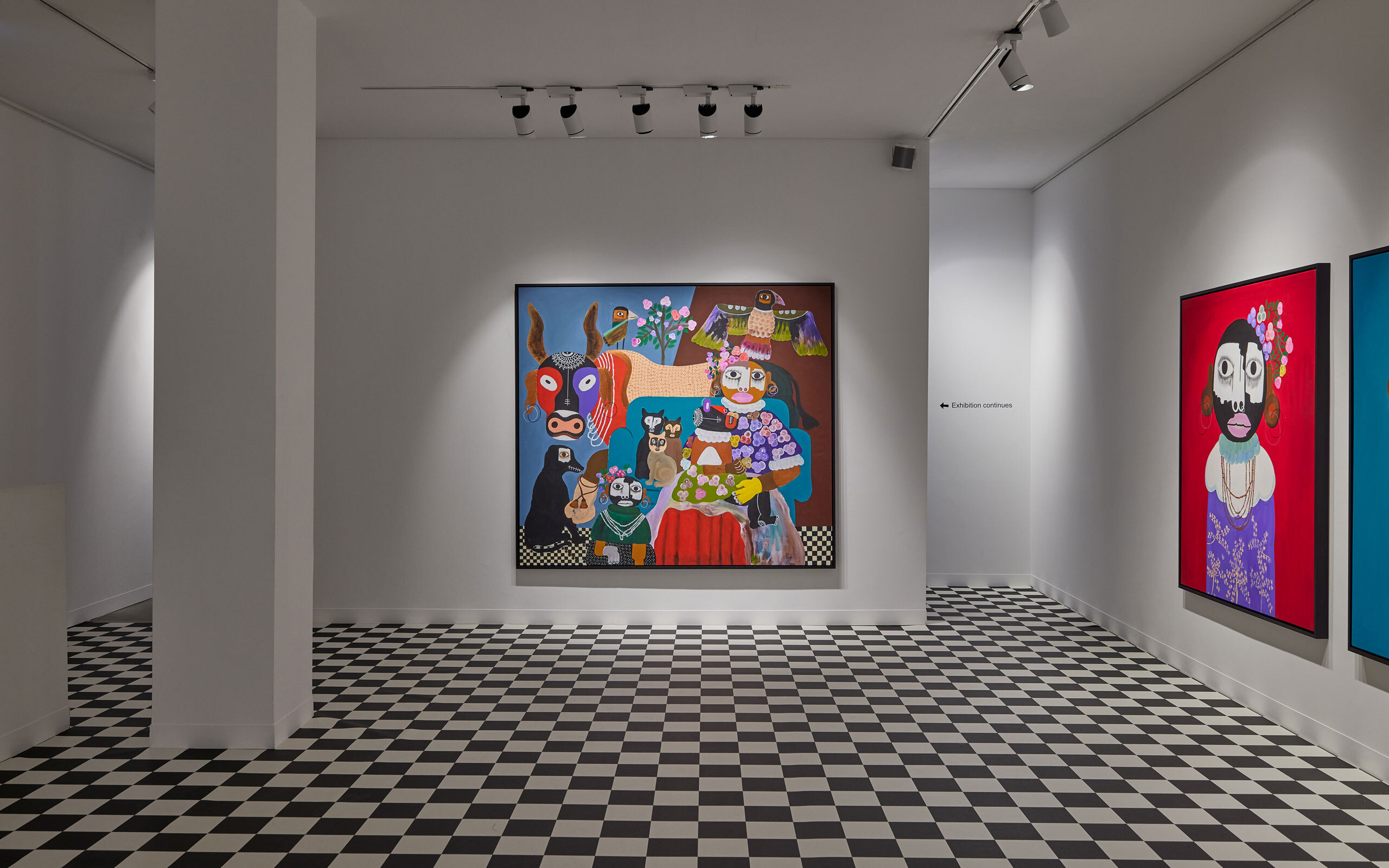
Credits: JD Malat Gallery, London
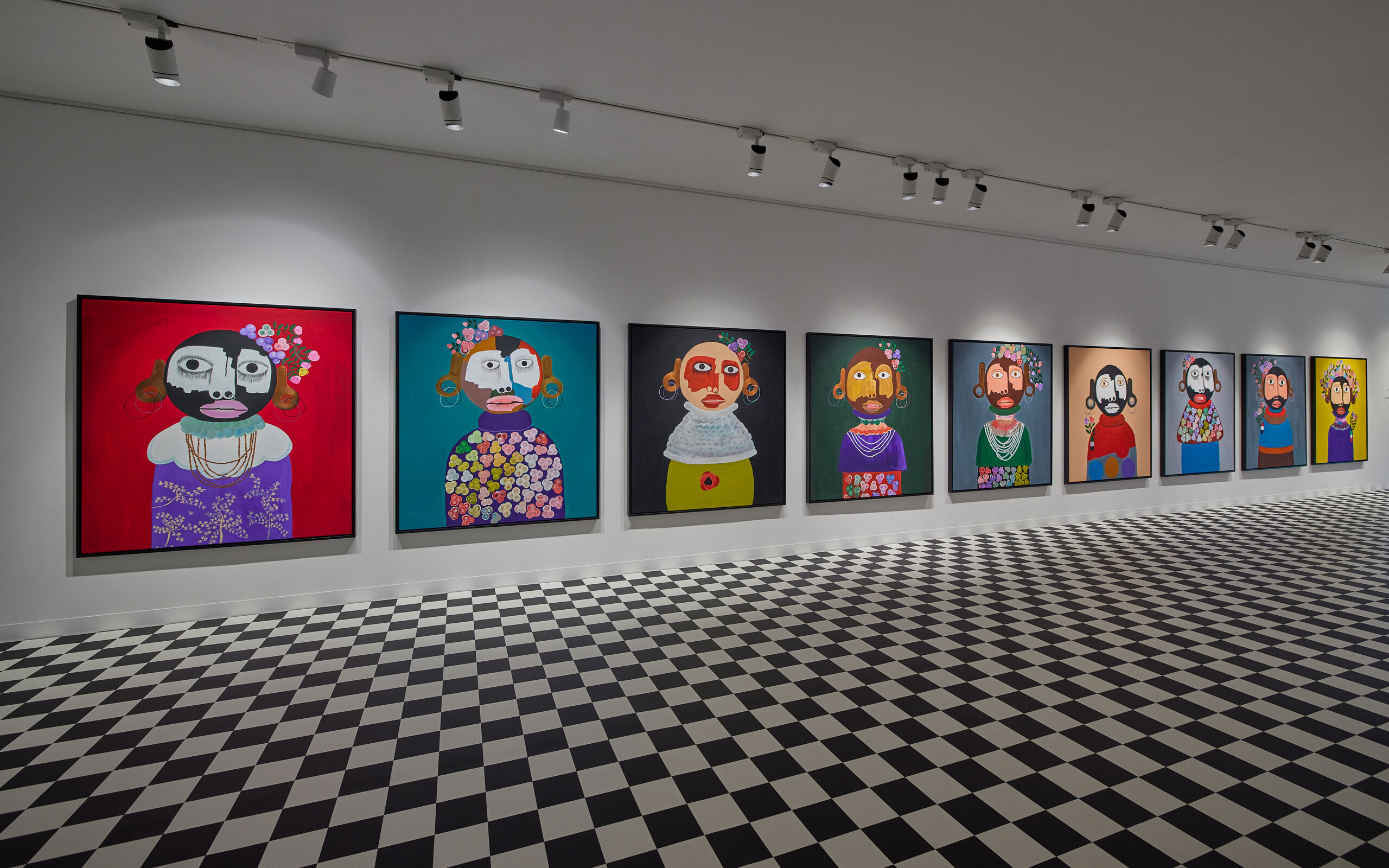
Credits: JD Malat Gallery, London
Do you have a particular process you stick to when painting?
I don’t always have a plan when I start a painting – I usually sit down and stare at the canvas on the wall. I like to work in the early hours of the morning and can spend all night sitting there thinking. I might grab a brush and paint to make a start by playing about and painting intuitively but then I go to bed and leave it for a bit. If I am lucky, then when I come back to the canvas an image might emerge – once I have that image in my head, the precise colours and composition, then I won’t stop painting until it is on the canvas. Sometimes I get to a point when I realise the colour and composition aren’t working and if I don’t like it I will paint over it and start again – I do that quite a lot. I get connected to the canvases themselves so prefer to paint over than start a fresh one.
Are you confined to painting as an artist or do you want to experiment with other mediums?
I want to try sculpture and plan to have an exhibition of sculptures next year – they will probably be in clay and bronze. The figures will be similar to those in my paintings but in sculptural form.
You have a strong presence on Instagram, do you think it’s important for artists nowadays to have a social media presence and personality?
I think I started using Instagram in 2012, I had Facebook before then but I didn’t really get it, I only ever used it to research artists and check out galleries. But Instagram was immediately exciting to me because a lot of street artists were using it to share their work. I started by just using it to post silly photos but then around 2016 I decided to make it professional. Initially, I didn’t really get it – I felt silly competing with teenagers for likes or follows. But now I know what I’m doing and have created a personality for myself on there where I’m a bit like a self-help guru. It may seem clichéd but I genuinely want to spread happy, harmonious messages and it’s nice to connect with people who like my work.
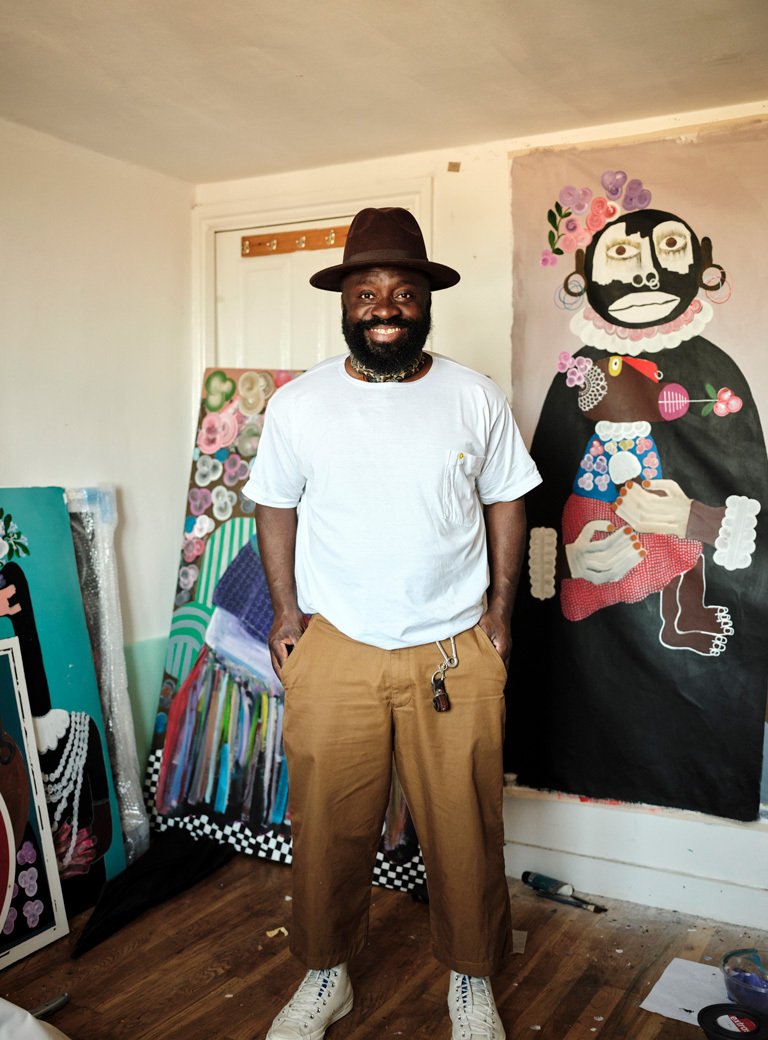
Interview: Frederica Miller
Photos: Liz Seabrook


